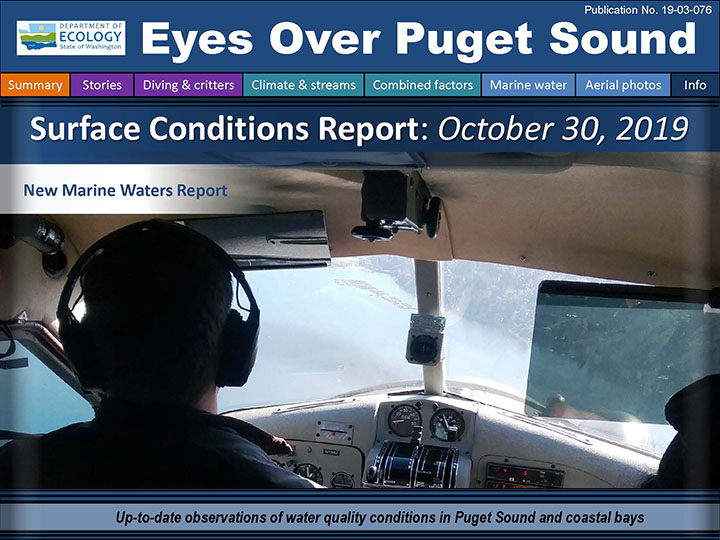New Eyes Over Puget Sound report now available
During our monthly flight in October, we saw plumes of river water starting to flow into Puget Sound. Though recent rainfall was higher than expected, river flows remained lower than they were at this time in 2018.
Temperatures still support salmon and herring
After a warm spring and summer, October air temperatures dropped to historic lows for the month. However, water temperatures remained warm enough in South and Central Sound for anchovies to spawn and to support optimal growth for herring and salmon in Whidbey Basin. This could be good news for Puget Sound’s food web.
Rafts of wrack ride the waves
Organic debris in North Sound.
In some places, we watched rafts of organic debris drift on the water’s surface. These were especially evident in South Sound, Whidbey Basin, East Sound, Discovery Bay, Bellingham Bay, and Padilla Bay. Macroalgae rafts were clearly visible around the islands of the North Sound, accumulating at the edges of tidal gullies.
Feature – Marine Waters Report
Readers of Eyes Over Puget Sound may also find the Puget Sound Marine Waters 2018 overview to be of interest. This latest annual report details the effects of a changing climate in Puget Sound for 2018. We update this overview report as part of our participation in the Puget Sound Ecosystem Monitoring Program’s Marine Waters Work Group. It is published by the Puget Sound Partnership.



